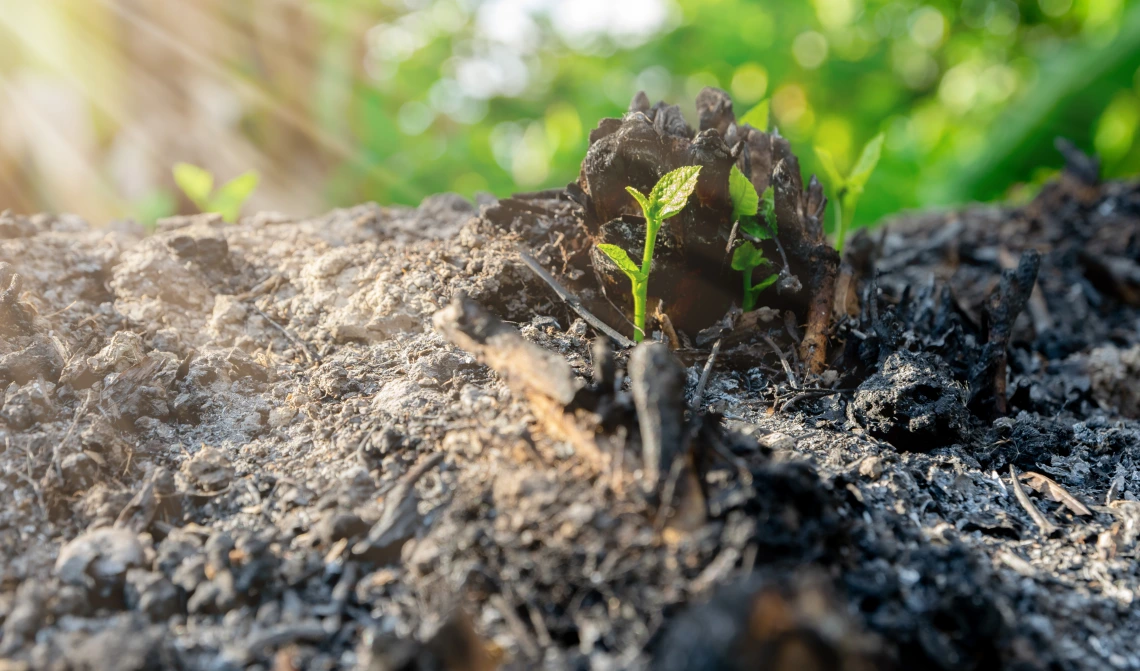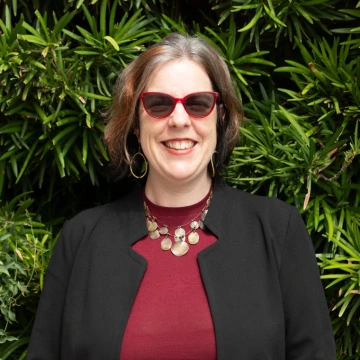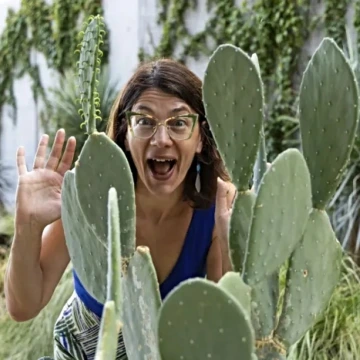AIR Resilience Theme Grant Focuses on Fire and Restoration in the Sonoran Desert

The winners of the 2025-26 AIR Annual Resilience Theme Grant will integrate science, arts, and education to work with local community partners in Sonoran Desert wild land fire ecology and conservation.
“The Sonoran Desert historically would have been seen as fireproof,” observed Elizabeth Baldwin, an associate professor in the University of Arizona’s School of Government and Public Policy. “Our native desert plants are not adapted to fire, and they don’t readily or regularly burn. And our pattern of building homes at the desert’s edge relies on the desert being fireproof.”
But now, with the influx of invasive flammable grasses like Buffelgrass and Stinknet, it’s not. These invasive grasses provide what the fire community calls “fine fuels,” Baldwin explained, which if ignited, will burn much longer than the native desert plants.
The fires in Maui, Hawai’i in 2023 and Los Angeles, California area in 2025 were at least partly driven by highly flammable invasive plants, Baldwin said: “These grasses burn really hot and really fast, and they have high costs in lives and infrastructure.”
Locally, Arizona wildfires in 2020 cost millions in fire retardant and firefighting. Desert land managers, researchers, wildland firefighters, and homeowners are still learning how to manage this ecological change. And as winners of the $100,000 Arizona Institute for Resilience Annual Resilience Theme Grant for 2025-2026, Baldwin and her team are prepared to help.

Liz Baldwin
“The community is at a point where the resilience theme has become very important,” said Baldwin, who previously has studied invasive species management with a grant from the National Science Foundation. “We’ve focused a lot on the problem, and we’re beginning to understand the ways that the desert can be resilient, and what it takes to get there. The next step is education.”
Baldwin’s project, called “Science, Art, and Ecology of Sonoran Desert Fires,” will approach community education about fire ecology and resilience through arts and education.
“Enabling interdisciplinary activity is one of the main goals of the Annual Resilience Theme,” said Sharon Collinge, director of AIR. “We are excited to be able to sponsor this university-community collaboration and thrilled to see the impactful educational outcomes of this project in particular, as it tackles one of the most important current conversations in our Southern Arizona community.”

Elise Gornish
“Science isn’t always presented in a way that is accessible to non-researchers,” observed Elise Gornish, director of AIR’s Desert Laboratory on Tumamoc Hill, a professor in the U of A’s School of Natural Resources and the Environment within the College of Agriculture, Life and Environmental Sciences, and a co-investigator of the project. “Presenting science through the lens of art has shown to be a successful way of making science accessible, memorable, and fun.
Baldwin’s team will partner with the Arizona-Sonora Desert Museum, Pima County, and the Tohono O’Odham Department of Natural Resources to create short, informative workforce development videos about desert ecology, native and invasive species, and why invasion control matters.
The team also will create educational kits about the role of invasive grasses in desert wildfires for local schools. In a creative spin on science education, Baldwin and her colleagues created a board game called Grassvasion, in which participants playing the roles of rancher, researcher, park ranger, and activist cooperate to save saguaro cacti from burning. “In the game, if the saguaro burns, everyone loses,” Baldwin explained. “But it’s possible to win by working together.”
Another team member will develop comic books for young people with the same educational themes, while a graduate student team member in education will package the materials into a curriculum to distribute to Tucson community middle and high schools.
“We have contacts at Pima County who have been doing education and outreach in local schools and can share ideas for how to make this useful for the classroom and how to distribute these resources,” Baldwin added.
Finally, the team will host educational arts outreach events and competitions, expected to include short film, science communication, and fine arts categories. Winning submissions will be installed in temporary exhibitions at the Tucson Museum of Contemporary Art and the Arizona-Sonora Desert Museum.
In addition to Baldwin and Gornish, team members include co-principal investigators Aaron Lien, university director of the Southwest Climate Adaptation Science Center and a researcher with the Lovejoy Center for Bridging Biodiversity, Conservation Science and Policy within AIR, and an assistant professor with the U of A’s School of Natural Resources and the Environment and Udall Center for Studies in Public Policy, Adam Douglas Henry, a professor in the U of A’s School of Government and Public Policy within the College of Social and Behavioral Sciences, Bryan Carter, director of the Center for Digital Humanities within the U of A College of Humanities, Wesley Fawcett Creigh, a Tucson-based artist, and Kimberly Franklin, associate director for conservation at the Arizona-Sonora Desert Museum.
“Community-engaged projects are critical for the inclusion of a greater number and diversity of knowledge and perspectives, which can make large-scale management more successful,” added Gornish, celebrating the Annual Resilience Theme’s community and university partners.
In many places around the world, invasive grass-fueled wildfire is a new reality, and one that land managers don’t fully understand how to handle. Meanwhile in Tucson, Baldwin said, many people care about ecosystem conservation, and county leaders are invested in fire management.
“This is a problem everywhere,” she said. “And Pima County may be on the cutting edge of figuring out how to manage this challenge. We’re excited to contribute to the endeavor this year.”

